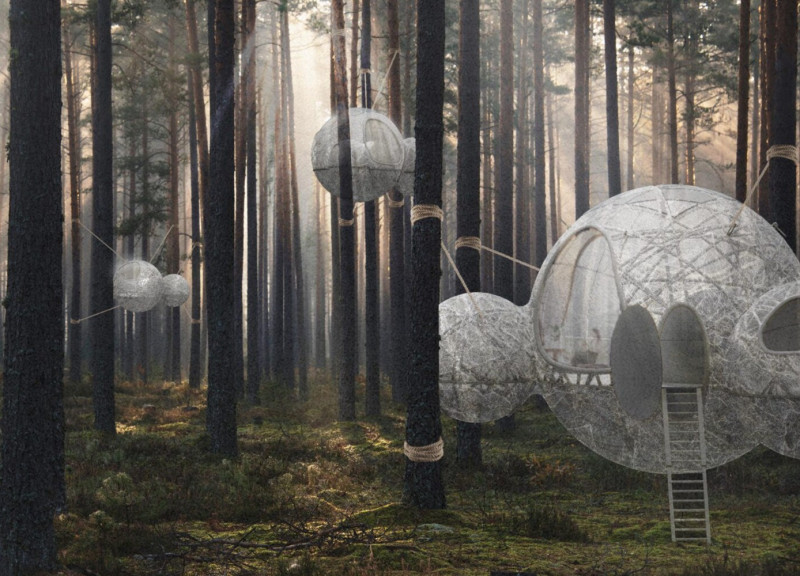5 key facts about this project
The "Adaptable Silkworm Facade" is an architectural design that blends into a forest setting while embodying a forward-thinking concept. The design consists of spherical modules suspended from trees, allowing for an aesthetic that preserves the natural ground. This strategy minimizes ecological disturbance and promotes a lifestyle that embraces nature. The idea revolves around the relationship between technology and the environment, showcasing how living spaces can coexist with their surroundings while offering modern comforts.
Architecture Concept
The structure employs a semi-permanent framework that provides flexibility over time. A key element is the facade, which incorporates micro-robots known as silkworm robots. These robots mimic the actions of real silkworms by creating cocoons, forming a protective outer layer. This approach not only enhances the privacy of the residents but also engages with the surrounding ecosystem. The use of robotics in this way signifies an innovative direction in sustainable design.
Functional Organization
The living spaces inside are divided into three separate spherical modules, each tailored for specific activities. The largest module serves as the main area for living, cooking, and storage. Other modules are designated for bedrooms and bathrooms, allowing for distinct yet interconnected spaces. This thoughtful arrangement supports a practical flow, addressing the needs of the inhabitants while maintaining an overall sense of unity in the design.
Materiality
Material choices play an important role in the overall feel of the building. Clear polycarbonate is used for openings, inviting natural light into the interiors and creating a connection with the forest outside. This selection enhances the user experience by making the spaces bright and inviting. It also reflects the project’s intent to merge harmoniously with nature, creating an atmosphere where the indoors and outdoors feel linked.
The design culminates in a facade that adapts and changes, responding actively to the environment, which highlights a commitment to developing architecture that respects and interacts with the natural world.



















































